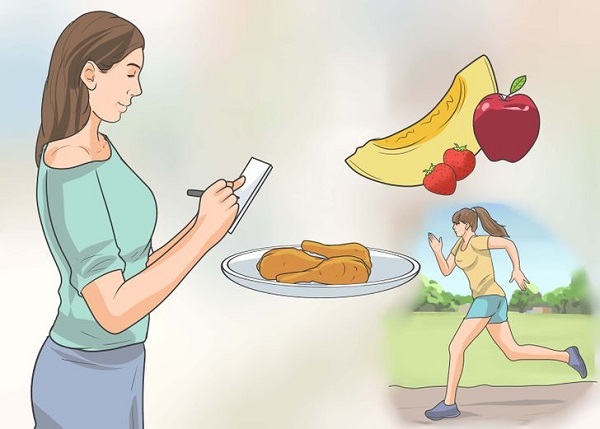What Are Comfort Foods—and Why Do We Crave Them?
“Comfort foods” are those nostalgic, indulgent meals or snacks we turn to in times of stress, sadness, or celebration. Think mac and cheese, ice cream, fried chicken, pizza, chocolate, or mashed potatoes. These foods are often high in calories, sugar, fat, or sodium—and they have one thing in common: they make us feel good… at least temporarily.
Comfort foods tend to be associated with emotional satisfaction and feelings of safety or reward. Many of them stem from childhood memories or cultural traditions, which is why they hold such powerful psychological appeal. When we eat them, our brain releases dopamine—the feel-good neurotransmitter—creating a short-term emotional boost.
But while comfort foods can bring temporary joy, they often come at the cost of long-term health, especially for those trying to lose weight.
The Psychology Behind Comfort Eating
Eating isn’t just a physical act—it’s deeply emotional. Comfort foods serve as a coping mechanism for stress, anxiety, loneliness, or even boredom. Known as “emotional eating,” this behavior leads people to eat not out of hunger, but in response to feelings.
Several psychological factors contribute to this pattern:
- Stress Response: Chronic stress increases cortisol levels, which can drive cravings for high-calorie, high-sugar foods.
- Emotional Regulation: Food can become a tool for self-soothing or avoiding uncomfortable feelings.
- Reward System: Comfort foods trigger dopamine pathways in the brain, reinforcing the habit even if you’re not physically hungry.
In essence, many of us use food to change how we feel—not to nourish our bodies.
How Comfort Foods Sabotage Weight Loss Efforts
Despite their appealing name, comfort foods can undermine your weight loss goals in several subtle and not-so-subtle ways. Here’s how:
- Hidden Calories Add Up Fast
Comfort foods are typically calorie-dense, meaning they contain a high number of calories in small portions. A bowl of creamy pasta or a slice of cake can exceed 500–800 calories—often without making you feel full for long. When consumed frequently, these excess calories can tip the scale against your weight loss progress.
- They Disrupt Hunger and Fullness Cues
Over time, relying on food for emotional comfort weakens your ability to distinguish between physical hunger and emotional cravings. This can lead to eating out of habit or mood rather than need, resulting in consistent overeating.
- Comfort Foods Are Usually Low in Nutrients
Most comfort foods are heavy in refined carbs, added sugars, trans fats, and sodium. These ingredients spike blood sugar levels and then cause them to crash—leading to cycles of fatigue, cravings, and further overeating.
Moreover, a lack of fiber, protein, and micronutrients can leave you feeling unsatisfied and more likely to snack again shortly after a meal.
- Triggering the “All or Nothing” Mentality
People trying to diet or eat healthy often view comfort food consumption as a failure. One indulgent meal can lead to guilt, which may prompt more emotional eating or abandonment of the weight loss plan altogether. This yo-yo mindset is both mentally exhausting and physically counterproductive.
- Comfort Eating Can Become Habitual
If you reach for chips every time you’re stressed, your brain starts forming a habit loop: stress → eat chips → feel temporary relief → repeat. Eventually, this can become automatic, making it harder to change the behavior even when you’re aware of its impact on your health.
Tips to Break the Comfort Food Cycle
You don’t have to eliminate all your favorite foods to lose weight. But understanding your relationship with comfort foods—and developing healthier coping strategies—is crucial.
- Identify Your Triggers
Keep a food and mood journal. Note what you eat, how much, and how you felt before and after. Patterns will emerge that show whether you’re eating in response to emotions rather than hunger.
- Find Non-Food Sources of Comfort
Try stress-relieving alternatives like:
- Walking or exercising
- Talking to a friend
- Meditating or deep breathing
- Taking a warm bath
- Journaling
These activities help soothe emotions without calories.
- Upgrade Your Comfort Foods
Recreate comfort food favorites using healthier ingredients. For example:
- Use mashed cauliflower instead of potatoes
- Bake instead of fry
- Swap refined sugar for natural sweeteners
- Add veggies or lean proteins to enhance nutrition
You can still enjoy the flavors and textures you love—just with fewer calories and more benefits.
- Practice Mindful Eating
Slow down. Eat without distractions. Pay attention to each bite’s flavor, texture, and how it makes you feel. This helps you recognize true hunger and satiety cues, reducing overeating.
- Allow Yourself Occasional Treats
Banning comfort foods entirely can backfire. Instead, plan for small indulgences now and then. Enjoy them guilt-free, and you’ll be less likely to binge later.
Healthy Alternatives to Common Comfort Foods
Here are a few ideas to satisfy your cravings without sabotaging your goals:
| Craving | Traditional Option | Healthier Swap |
| Ice cream | Full-fat dairy | Frozen Greek yogurt with berries |
| Chips | Potato chips | Air-popped popcorn or roasted chickpeas |
| Pasta | Alfredo pasta | Zucchini noodles with light sauce |
| Fried chicken | Deep-fried version | Baked chicken with crispy whole grain coating |
| Chocolate | Candy bar | Dark chocolate (70% cocoa or higher) |
Final Thoughts: Balance Is Key
Comfort foods can provide emotional relief—but if they become a daily crutch, they can quietly sabotage your weight loss efforts. Awareness is the first step. By recognizing your triggers and finding healthier substitutes or emotional outlets, you can still enjoy your favorite meals without derailing your progress.
Remember: food is not the enemy, but it also shouldn’t be your only source of comfort. With balance, planning, and mindfulness, you can achieve your health goals and still enjoy eating along the way.
Sources:
https://www.hunimed.eu/news/why-do-we-crave-comfort-food/
https://pmc.ncbi.nlm.nih.gov/articles/PMC6002923/
https://www.chestercountyhospital.org/news/health-eliving-blog/2021/march/five-ways-you-can-still-eat-comfort-foods









